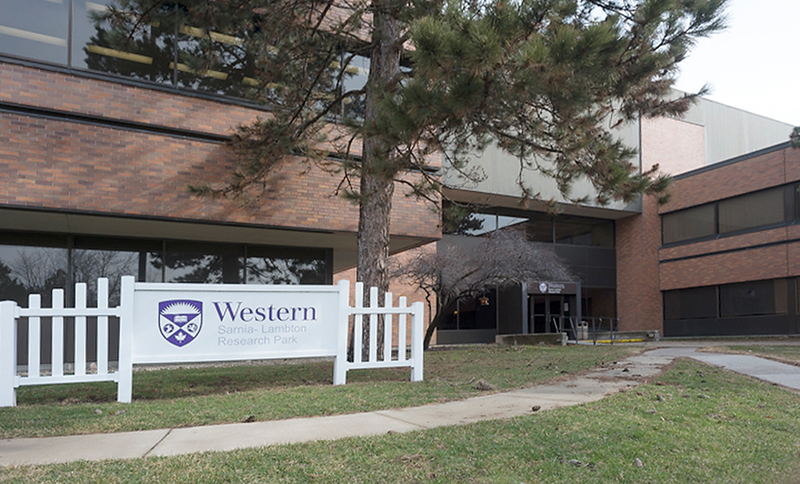
Author: Paul Morden, The Sarnia Observer
A team of researchers is at work in a lab in Sarnia developing a better ginseng plant.
They’re led by Ed Lui, a Western University professor emeritus and researcher, who founded the ginseng products company, Western Phytoceutica.
It moved into the Western Sarnia-Lambton Research Park next to Modeland Road in 2014 and is currently one of 26 tenants in the park’s commercialization centre.
Bio-chemistry has been a main focus for the research park but it’s working to diversify the sectors the centre serves with office space, labs and a pilot plant facility at the former Dow Chemical Canada headquarters and research site.
Katherine Albion, executive director of the research park owned by Lambton County since 2003, said Western Phytoceutica is part of the natural health sector that was identified as a good fit with the region’s farms and agriculture businesses.
The park is also working to attract young companies in water technologies, automation and advanced manufacturing.
“We’re here to support the region, and economic diversification and development,” Albion said.
Lui, a physiology and pharmacology professor, began researching commercialization of ginseng in 2008 and was looking for new research space a few years ago when a colleague recommended the Sarnia research park.
“When I moved here, I found so many synergies and connections with Lambton College,” leading to “a fair bit of collaboration and funding,” he said.
The college has worked expand its applied research in recent years and was certainly rank as Canada’s top college for research income.
“The college, and also the park here, provide a very good environment,” Lui said. His company has doubled its research space at the park and is making use of space in its pilot plant facility.
Ontario is home to 140 or more ginseng growers, making it the largest producer of North American ginseng root, an herb used as a health supplement. Most of Ontario’s ginseng is exported to Asia.
Lui said he discovered colleges are “more practical, technical in nature,” compared to university-based research, and are able to help in areas such as instrumentation and automation.
Albion said that along with its facilities, the park provides an opportunity for new companies to work with the college’s faculty, graduate students, co-op students and access its research support.
In Sarnia, Lui’s company generally has seven or eight people involved in its work researching molecular horticulture and hydroponic cultivation aimed at improving North American ginseng. It also began working with Goldenseal, a native herb also used in herbal supplements.
It’s also researching advanced bio-processing of ginseng and makes use of the pilot plant space at the research park.
“It’s really our pilot plant space that sets us apart,” Albion said.
It was part of the facilities left by Dow Chemical and offers space and supporting infrastructure for new companies to set up and operate pilot plants, a step used to reach commercial production.
California-based Origin Materials is another tenant of the park with a pilot plant at the facility. It’s also building a demonstration plant at the Arlanxeo site in Sarnia to produce bio-based chemicals used to make plastics and other products.
Lui said small, start-up companies generally can’t afford to buy and maintain the type of equipment and facilities the research park provides.
Albion said more than 80 per cent of the park’s pilot and research space is currently in use and it added seven new tenants, last year.
It also had four tenants “graduate” from the park, she said.
She added they use the term “graduate” because it means the tenant accomplished what they came to the research park to do and moved on to the next phase of their development.
“One of the metrics for determining our own success is how many graduates we have coming through the park,” Albion said.
Most tenants come from outside of Sarnia-Lambton and can bring new projects, investment and technologies with them, she said.
“It really has a lot of spin-off benefits for the region.”

